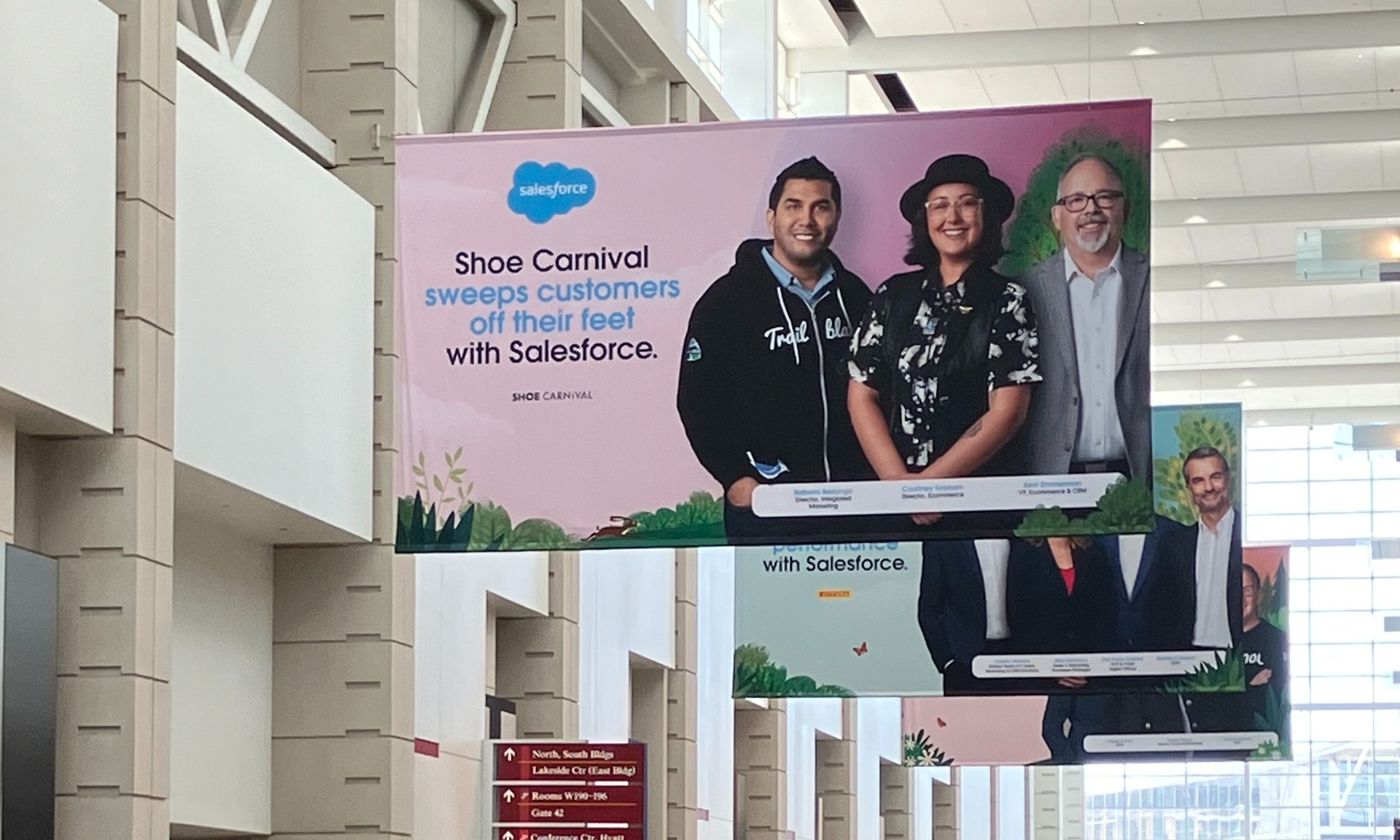MARKETING
How Video Collaboration Tools are Changing the Game

With the advent of modern technology and shifting workplace expectations, it’s no longer necessary to gather everyone in the office to carry out meetings, plan tasks, or even do business. Companies can now use video conferencing tools that allow teams to stay connected, collaborate on projects, and exchange ideas even when working remotely.
But video collaboration tools come with many business benefits too. From boosted employee productivity to increasing sales, let’s discuss five big benefits that video collaboration tools can bring to businesses like yours.
What Are Video Collaboration Tools?
Video collaboration tools are the modern technologies and platforms that allow you to stream and receive video media across the Internet. Video collaboration tools include videoconferencing, streaming, and webcam software, although the list doesn’t stop here. Some of the most popular video collaboration tools are:
- Zoom, which is prized for its videoconferencing potential and because of the video and audio quality it facilitates
- Microsoft Teams, which is a fantastic collaboration tool for projects thanks to features like file sharing and chat functionality
- Google Meet, which has a simplified interface yet still allows up to 250 participants in a single meeting
But whether your brand uses these video collaboration tools or others, one thing is clear: they’re the way of the future. Video collaboration tools enable companies to hold meetings from afar, bringing everyone into the fold, even if most employees work from home offices. They also allow organizations to contact their customers or clients using video calls rather than impersonal emails.
Big Benefits of Video Collaboration Tools
The rise of video collaboration tools didn’t just occur because of the COVID-19 pandemic, although that certainly sped things up. In truth, there are many big benefits to using video collaboration tools, and we’ll discuss five of the most important ones below.
Improved Employee Retention
For starters, video collaboration tools have the potential to improve employee retention, especially if you use a hybrid workplace model and allow some employees to work from home.
Your business could see improved retention rates because video collaboration tools make more positive, unified working environments. They allow employees and managers to communicate openly and honestly with each other, which helps to build feelings of loyalty and engagement.
That’s all not to say that video collaboration tools are not the only effective ways of facilitating meetings. Text-based communication, like emails or chat sessions, can be very effective as well. As an example, Weave allows medical clinics to use direct text messaging tools to connect with patients from anywhere in the world.
No longer do patients need to make long, tiring journeys to visit physical offices and get the support and treatment they need – now they can handle a lot of meetings from afar, all while meeting with the same trusted advisors they’ve grown used to and receiving the same expert care as always.
Employee Flexibility
In keeping with the above, video collaboration tools allow employees to benefit from more schedule flexibility. Videoconferencing and collaboration software is so advanced that many tasks can be completed entirely remotely. This opens up the opportunity for you to let employees work from home or even full-time.
Not only will this give workers more freedom over their daily lives, but it will also allow your business to save money since you won’t need to spend as much on office space. Plus, greater employee flexibility often leads to better brand loyalty, so your most valuable workers will stick with your company through thick and thin rather than being swayed to a competitor by a bigger paycheck or other perks.
Boosted Productivity
Of course, video collaboration tools have further changed the game for lots of companies by boosting productivity, which is increasingly important in today’s competitive business environment.
Video collaboration tools can help boost employee productivity by:
- Enabling quick and efficient communication between team members. As a result, tasks can be completed much more rapidly and accurately.
- Letting employees get the information they need to accomplish tasks quickly with features like document sharing and editing, instant messaging, and more.
- Reducing the need for time-consuming in-person meetings and lengthy emails. On top of that, eliminating such meetings will undoubtedly have a positive effect on office morale and workplace culture.
Higher Sales
Video collaboration tools may even lead to higher sales and increased revenue for your business. That’s because video collaboration is a major asset when you want to increase customer engagement. If customers can connect and communicate with salespeople online through video conferencing software, for example, they’ll be more likely to make purchases, even if they buy things over the Internet.
Your salespeople, in turn, can provide your target customers with everything they need and give them more personalized experiences. Customers who receive personalized experiences are more likely to have loyalty to your company and make repeat purchases in the future.
As you can see, all of these things feed into each other and lead to a better shopping experience for the customer and a better time for your workers, who feel that they are better able to deliver exactly what your customers need.
Better Customer Satisfaction
Lastly, video collaboration tools lead to better customer satisfaction. By leveraging videoconferencing and telecommunications technology, your brand can:
- Build long-lasting, enduring relationships with target customers. Customers can see people behind the brand rather than communicating over text-based messages like emails. This helps to build trust and loyalty.
- Answer questions and concerns for customers quickly and accurately. For example, a customer service agent can use video collaboration tools to directly answer a customer complaint rather than responding over a chat box or an impersonal email.
Other data points, such as marketing results and social media metrics, point to similar results across the board in many different industries. Customers are happier than ever with the ability to connect with professionals, specialists, and advisors over the Internet using video collaboration tools.
More than anything, video collaboration tools make brands more available to their chief customers, which makes them better choices than their competitors. For this reason, above all else, it may be a good idea to adopt video collaboration tools ASAP.
Why Are Video Communication and Collaboration So Successful?
It’s simple: video communication and collaboration software increase human, person-to-person connections. Internet communication is a marvel in and of itself. But it’s often impersonal, and people have difficulty feeling a connection or loyalty to brands that they only view online.
When potential customers interact with the people behind the screen, however, such as salespeople, customer service agents, and managers, they are more likely to see the business as the living, breathing thing it really is.
This goes for both customers and your teammates or employees. Video collaboration tools change the game by reintroducing the human element into business, even in our modern, Internet-reliant world.
Conclusion
Video collaboration tools aren’t going away anytime soon. It’s better to lean into this industry-wide trend and take advantage of video collaboration software for your enterprise, no matter what industry you work in. From improved employee retention to increased customer satisfaction and boosts in sales, these tools can help take your business to the next level.
MARKETING
YouTube Ad Specs, Sizes, and Examples [2024 Update]
![YouTube Ad Specs, Sizes, and Examples [2024 Update] YouTube Ad Specs, Sizes, and Examples](https://articles.entireweb.com/wp-content/uploads/2024/06/YouTube-Ad-Specs-Sizes-and-Examples.jpg)
Introduction
With billions of users each month, YouTube is the world’s second largest search engine and top website for video content. This makes it a great place for advertising. To succeed, advertisers need to follow the correct YouTube ad specifications. These rules help your ad reach more viewers, increasing the chance of gaining new customers and boosting brand awareness.
Types of YouTube Ads
Video Ads
- Description: These play before, during, or after a YouTube video on computers or mobile devices.
- Types:
- In-stream ads: Can be skippable or non-skippable.
- Bumper ads: Non-skippable, short ads that play before, during, or after a video.
Display Ads
- Description: These appear in different spots on YouTube and usually use text or static images.
- Note: YouTube does not support display image ads directly on its app, but these can be targeted to YouTube.com through Google Display Network (GDN).
Companion Banners
- Description: Appears to the right of the YouTube player on desktop.
- Requirement: Must be purchased alongside In-stream ads, Bumper ads, or In-feed ads.
In-feed Ads
- Description: Resemble videos with images, headlines, and text. They link to a public or unlisted YouTube video.
Outstream Ads
- Description: Mobile-only video ads that play outside of YouTube, on websites and apps within the Google video partner network.
Masthead Ads
- Description: Premium, high-visibility banner ads displayed at the top of the YouTube homepage for both desktop and mobile users.
YouTube Ad Specs by Type
Skippable In-stream Video Ads
- Placement: Before, during, or after a YouTube video.
- Resolution:
- Horizontal: 1920 x 1080px
- Vertical: 1080 x 1920px
- Square: 1080 x 1080px
- Aspect Ratio:
- Horizontal: 16:9
- Vertical: 9:16
- Square: 1:1
- Length:
- Awareness: 15-20 seconds
- Consideration: 2-3 minutes
- Action: 15-20 seconds
Non-skippable In-stream Video Ads
- Description: Must be watched completely before the main video.
- Length: 15 seconds (or 20 seconds in certain markets).
- Resolution:
- Horizontal: 1920 x 1080px
- Vertical: 1080 x 1920px
- Square: 1080 x 1080px
- Aspect Ratio:
- Horizontal: 16:9
- Vertical: 9:16
- Square: 1:1
Bumper Ads
- Length: Maximum 6 seconds.
- File Format: MP4, Quicktime, AVI, ASF, Windows Media, or MPEG.
- Resolution:
- Horizontal: 640 x 360px
- Vertical: 480 x 360px
In-feed Ads
- Description: Show alongside YouTube content, like search results or the Home feed.
- Resolution:
- Horizontal: 1920 x 1080px
- Vertical: 1080 x 1920px
- Square: 1080 x 1080px
- Aspect Ratio:
- Horizontal: 16:9
- Square: 1:1
- Length:
- Awareness: 15-20 seconds
- Consideration: 2-3 minutes
- Headline/Description:
- Headline: Up to 2 lines, 40 characters per line
- Description: Up to 2 lines, 35 characters per line
Display Ads
- Description: Static images or animated media that appear on YouTube next to video suggestions, in search results, or on the homepage.
- Image Size: 300×60 pixels.
- File Type: GIF, JPG, PNG.
- File Size: Max 150KB.
- Max Animation Length: 30 seconds.
Outstream Ads
- Description: Mobile-only video ads that appear on websites and apps within the Google video partner network, not on YouTube itself.
- Logo Specs:
- Square: 1:1 (200 x 200px).
- File Type: JPG, GIF, PNG.
- Max Size: 200KB.
Masthead Ads
- Description: High-visibility ads at the top of the YouTube homepage.
- Resolution: 1920 x 1080 or higher.
- File Type: JPG or PNG (without transparency).
Conclusion
YouTube offers a variety of ad formats to reach audiences effectively in 2024. Whether you want to build brand awareness, drive conversions, or target specific demographics, YouTube provides a dynamic platform for your advertising needs. Always follow Google’s advertising policies and the technical ad specs to ensure your ads perform their best. Ready to start using YouTube ads? Contact us today to get started!
MARKETING
Why We Are Always ‘Clicking to Buy’, According to Psychologists

Amazon pillows.
MARKETING
A deeper dive into data, personalization and Copilots

Salesforce launched a collection of new, generative AI-related products at Connections in Chicago this week. They included new Einstein Copilots for marketers and merchants and Einstein Personalization.
To better understand, not only the potential impact of the new products, but the evolving Salesforce architecture, we sat down with Bobby Jania, CMO, Marketing Cloud.
Dig deeper: Salesforce piles on the Einstein Copilots
Salesforce’s evolving architecture
It’s hard to deny that Salesforce likes coming up with new names for platforms and products (what happened to Customer 360?) and this can sometimes make the observer wonder if something is brand new, or old but with a brand new name. In particular, what exactly is Einstein 1 and how is it related to Salesforce Data Cloud?
“Data Cloud is built on the Einstein 1 platform,” Jania explained. “The Einstein 1 platform is our entire Salesforce platform and that includes products like Sales Cloud, Service Cloud — that it includes the original idea of Salesforce not just being in the cloud, but being multi-tenancy.”
Data Cloud — not an acquisition, of course — was built natively on that platform. It was the first product built on Hyperforce, Salesforce’s new cloud infrastructure architecture. “Since Data Cloud was on what we now call the Einstein 1 platform from Day One, it has always natively connected to, and been able to read anything in Sales Cloud, Service Cloud [and so on]. On top of that, we can now bring in, not only structured but unstructured data.”
That’s a significant progression from the position, several years ago, when Salesforce had stitched together a platform around various acquisitions (ExactTarget, for example) that didn’t necessarily talk to each other.
“At times, what we would do is have a kind of behind-the-scenes flow where data from one product could be moved into another product,” said Jania, “but in many of those cases the data would then be in both, whereas now the data is in Data Cloud. Tableau will run natively off Data Cloud; Commerce Cloud, Service Cloud, Marketing Cloud — they’re all going to the same operational customer profile.” They’re not copying the data from Data Cloud, Jania confirmed.
Another thing to know is tit’s possible for Salesforce customers to import their own datasets into Data Cloud. “We wanted to create a federated data model,” said Jania. “If you’re using Snowflake, for example, we more or less virtually sit on your data lake. The value we add is that we will look at all your data and help you form these operational customer profiles.”
Let’s learn more about Einstein Copilot
“Copilot means that I have an assistant with me in the tool where I need to be working that contextually knows what I am trying to do and helps me at every step of the process,” Jania said.
For marketers, this might begin with a campaign brief developed with Copilot’s assistance, the identification of an audience based on the brief, and then the development of email or other content. “What’s really cool is the idea of Einstein Studio where our customers will create actions [for Copilot] that we hadn’t even thought about.”
Here’s a key insight (back to nomenclature). We reported on Copilot for markets, Copilot for merchants, Copilot for shoppers. It turns out, however, that there is just one Copilot, Einstein Copilot, and these are use cases. “There’s just one Copilot, we just add these for a little clarity; we’re going to talk about marketing use cases, about shoppers’ use cases. These are actions for the marketing use cases we built out of the box; you can build your own.”
It’s surely going to take a little time for marketers to learn to work easily with Copilot. “There’s always time for adoption,” Jania agreed. “What is directly connected with this is, this is my ninth Connections and this one has the most hands-on training that I’ve seen since 2014 — and a lot of that is getting people using Data Cloud, using these tools rather than just being given a demo.”
What’s new about Einstein Personalization
Salesforce Einstein has been around since 2016 and many of the use cases seem to have involved personalization in various forms. What’s new?
“Einstein Personalization is a real-time decision engine and it’s going to choose next-best-action, next-best-offer. What is new is that it’s a service now that runs natively on top of Data Cloud.” A lot of real-time decision engines need their own set of data that might actually be a subset of data. “Einstein Personalization is going to look holistically at a customer and recommend a next-best-action that could be natively surfaced in Service Cloud, Sales Cloud or Marketing Cloud.”
Finally, trust
One feature of the presentations at Connections was the reassurance that, although public LLMs like ChatGPT could be selected for application to customer data, none of that data would be retained by the LLMs. Is this just a matter of written agreements? No, not just that, said Jania.
“In the Einstein Trust Layer, all of the data, when it connects to an LLM, runs through our gateway. If there was a prompt that had personally identifiable information — a credit card number, an email address — at a mimum, all that is stripped out. The LLMs do not store the output; we store the output for auditing back in Salesforce. Any output that comes back through our gateway is logged in our system; it runs through a toxicity model; and only at the end do we put PII data back into the answer. There are real pieces beyond a handshake that this data is safe.”
-

 SEARCHENGINES5 days ago
SEARCHENGINES5 days agoBillions Of Google goo.gl URLs To 404 In The Future
-

 SEO7 days ago
SEO7 days ago26 Common SEO Myths, Debunked
-
SEARCHENGINES4 days ago
Daily Search Forum Recap: July 22, 2024
-

 SEARCHENGINES6 days ago
SEARCHENGINES6 days agoGoogle Core Update Coming, Ranking Volatility, Bye Search Notes, AI Overviews, Ads & More
-

 SEO5 days ago
SEO5 days ago11 Copyscape Alternatives To Check Plagiarism
-

 SEO6 days ago
SEO6 days agoGoogle Warns Of Last Chance To Export Notes Search Data
-
SEARCHENGINES3 days ago
Daily Search Forum Recap: July 23, 2024
-

 AFFILIATE MARKETING6 days ago
AFFILIATE MARKETING6 days agoThe Top 5 AI Tools That Can Revolutionize Your Workflow and Boost Productivity















